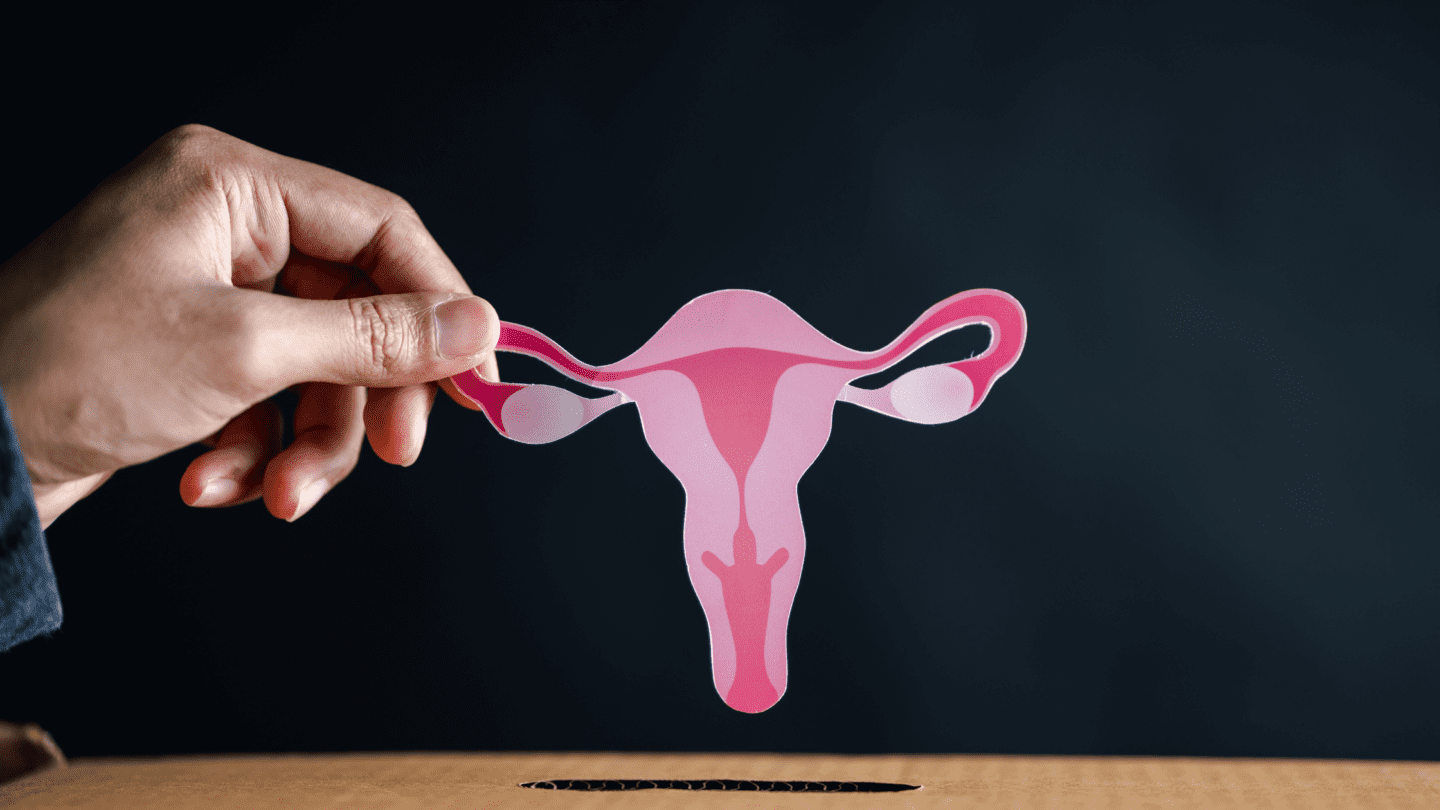When your period is on the way, you can get bombarded with symptoms ranging from mildly irritating to downright dreadful. In between ovulation and menstruation, your levels are shifting — and for some of us, so is our mood. Even more frustrating, premenstrual symptoms are seriously under-researched, especially when you consider how common they are and how disabling they can be.1
But you don’t have to suffer through your symptoms. Researchers are learning more and more about premenstrual syndrome (PMS) and its more-severe cousin, premenstrual dysphoric disorder (PMDD). Here’s what you need to know about the similarities and differences between these two conditions, their symptoms and causes, and how to treat them.
The difference between PMS and PMDD
Premenstrual syndrome, or PMS, is a catch-all term used to refer to any combination of regularly occurring pre-period symptoms, whether it’s irritability and fatigue, bloating and breast soreness, headaches and reduced sex drive, or all of the above.
Somewhere between 80 and 90% of women and people with uteruses experience some sort of symptoms in the one to two weeks leading up to their period.2 The list of possible PMS symptoms is long: weight gain, acne, constipation or diarrhea, food cravings, loss of appetite, sleep disruptions, symptoms of depression and anxiety, and more.
Premenstrual dysphoric disorder (PMDD) shares many of the same symptoms with PMS. But the main difference between the two is that symptoms of PMDD are so severe that they interfere with daily life. Different sources give different estimates for how prevalent PMDD is in the , ranging from 1% to 2%,2 to up to 7%3 of women and menstruating people — millions worldwide.4
PMDD can often be misdiagnosed as depression,5 which isn’t surprising given how similar the symptoms are. In addition to the the moodiness, irritability, or anxiety that might come with PMS, PMDD can result in serious levels of fatigue, over- or under-sleeping, hopelessness, tearfulness, feeling on-edge, and/or difficulty concentrating — at a level that, by definition, is debilitating.
The key to correctly diagnosing PMDD is that its symptoms can be consistently matched to your period, stopping after menstruation begins and starting again in the next luteal phase.4-5 Symptoms are typically at their most severe shortly before and after your period starts.5
Like what you’re reading? Get the latest straight to your inbox 💌
PMS and PMDD causes
PMDD is relatively new as a formally diagnosable condition. It was only added to the DSM — the American Psychiatric Association’s Diagnostic and Statistical Manual of Mental Disorders, which serves as the standard for the medical field nationwide — in 2013.5 An earlier version of the DSM included it in an appendix, calling it “late luteal phase dysphoric disorder” and flagging it as deserving follow-up study.5 This means the condition didn’t get taken seriously by most medical providers or researchers until very recently. Still, researchers have made progress learning about what underlies the condition.
Both PMS and PMDD occur after ovulation and before menstruation starts, during the luteal phase of the menstrual cycle. During that time, progesterone and levels rise before dropping off to trigger your period. But it’s not the hormonal changes themselves that cause premenstrual trouble: Studies have found that hormonal fluctuations are the same in both PMDD sufferers and healthy individuals.4 Instead, the problem likely lies in how each person’s body responds to the change in levels — specifically, levels of estradiol and that shift from low to high6 — though the exact reasons why some people are more sensitive than others are still unknown.

Experts suspect an interaction between s, stress, and hormones is likely at play. So far, studies looking for specific s linked with PMDD have been inconclusive, reporting negative or conflicting results 7 Researchers studying the stress link have had more luck, confirming that a history of chronic stress or trauma increases the likelihood of PMDD.4
The link to hormones is more clear, but more complicated. Fluctuating levels are especially influential, triggering chain reactions that cascade throughout the body. breaks down into allopregnanolone (ALLO), which is a neuroactive steroid, meaning it affects the functions of neurotransmitters.4 Specifically, ALLO alters the function of receptors for the neurotransmitter gamma-Aminobutyric acid (GABA), inhibiting their ability to do their job of reducing feelings like anxiety, stress, and fear.4 This chain reaction is even visible in the brain: fMRI studies show people with PMDD have a higher amygdala response to negative stimuli than controls do — they’re more fearful.8
Scientists also think the effect of on serotonin function may hold clues to PMDD as well, based on evidence that selective serotonin reuptake inhibitors (SSRIs) can alleviate symptoms.4
Treatments for PMS and PMDD
Symptoms of PMS and PMDD can be severe and debilitating, so finding effective treatments can be vital. For some, that can mean singling out a particularly severe symptom. For instance, drugs like spironolactone can reduce physical symptoms of PMDD, danazol can reduce breast pain, alprazolam can help anxiety, and sumatriptan or naproxen can alleviate migraines.2
But for those with more severe symptoms, especially in combination, the two main treatment paths are to either adjust serotonin levels in the body or to prevent ovulation to avoid the subsequent luteal-phase hormonal fluctuations.
The same SSRIs and serotonin and norepinephrine reuptake inhibitors (SNRIs) that many people take for depression can alleviate the severe mood symptoms of PMS and PMDD.9 Doctors can prescribe these to be taken continuously or only during the luteal phase of the menstrual cycle, when symptoms develop.9
Studies have also examined the effects of potential non-drug treatments like yoga, dietary changes, calcium, Gingko biloba, Vitex angus-castus, and more — but the limited evidence out there suggests very minimal benefits.4,10 Likewise, cognitive behavioral therapy (CBT) may be helpful for developing coping strategies, especially for mood-related symptoms, but data on the effectiveness of CBT for PMDD specifically is sparse.10 These options may look more promising one day, but for now, they’ll need more study and scrutiny before we recommend them.
Effect of on PMS and PMDD
Because hormones are at the core of both PMS and PMDD, medication that affects levels — like hormonal contraceptives — can have an effect. There’s currently only one hormonal contraceptive, Yaz (drospirenone and ), that’s FDA-approved specifically to treat PMDD. But any hormonal contraceptive that prevents ovulation may even out levels and prevent symptoms.
Is adyn right for you? Take the quiz.
But it’s complicated: For some people, can make symptoms worse. Studies have found that one-third of people who switch methods or discontinue use entirely do so because of mood-related symptoms.11 In one study, researchers monitored 200 women, half of whom used hormonal contraceptives and found small but significant increases in anxiety, irritability, and mood swings in the group overall, especially for those who had reported “previous adverse hormonal contraceptive experiences.”12 But when it came to premenstrual depression, they found a significant decrease in symptom severity.
Other studies have reported the opposite. In a 2021 review, researchers reported that combined oral contraceptives (like the pill) were better at treating premenstrual symptoms than except when it came to depression.13 And some studies found both effects, like a 2003 study that found about equal numbers of women reported improved and worsened premenstrual moods while on the pill.14
There is one that seems to be promising for PMDD: Drospirenone combined with . For PMDD sufferers, studies show the hormonal combination out performs placebos;15 reduces symptoms like negative emotions, food cravings, and water retention;16 improves functional impairment;17 and overall improved health-related quality of life.18 And all that happened regardless of whether the hormonal contraceptive was taken continuously or intermittently.19
One catch is that effects are often strong in these studies,2o sometimes even as strong as the drug effects.19 We need more research to tease these effects apart, see how long contraceptives work to reduce PMS and PMDD symptoms over the long haul, and determine whether other contraceptives work better. For instance, at least one study has found improved premenstrual symptoms with the ring,21 while another found some support for continuous-cycle levonorgestrel/ oral contraceptives,22 and another found adolescents using patches reported decreased premenstrual depression.23
What to do if PMS or PMDD is bringing you down
If you’re struggling with PMS or PMDD symptoms, especially if they’re interfering with your school, job, relationships, or other aspects of life, talk to your doctor. The best information you can bring to your appointment is detailed information about how your symptoms change with your cycle — your doctor will want to confirm this before diagnosing PMDD. As a rule of thumb, track your mood and other symptoms across three cycles.
Be sure to also watch out for other medications that may be causing side effects, including your . And if you experience depressive thoughts that feel out of control, or you’re thinking about hurting yourself or others, please seek help: The National Suicide Prevention Line (800-273-8255) is always available.
PMS and PMDD are under-researched, but are common conditions that doctors are learning more and more about every day. If you’re suffering before each period, talk to your doctor. Treatments are out there, and the results can be life-changing.
-
- Rapkin, Andrea J., and Sharon A. Winer. “Premenstrual syndrome and premenstrual dysphoric disorder: quality of life and burden of illness.” Expert Review of Pharmacoeconomics & Outcomes Research 9.2 (2009): 157-170.
- Reid, Robert L., and Claudio N. Soares. “Premenstrual dysphoric disorder: contemporary diagnosis and management.” Journal of Obstetrics and Gynaecology Canada 40.2 (2018): 215-223.
- Rapkin, Andrea J., Yelena Korotkaya, and Kathrine C. Taylor. “Contraception counseling for women with premenstrual dysphoric disorder (PMDD): Current perspectives.” Open Access Journal of Contraception 10 (2019): 27.
- Hantsoo, Liisa, and C. Neill Epperson. “Premenstrual dysphoric disorder: epidemiology and treatment.” Current Psychiatry Reports 17.11 (2015): 1-9.
- Epperson, C. Neill, et al. “Premenstrual dysphoric disorder: evidence for a new category for DSM-5.” American Journal of Psychiatry 169.5 (2012): 465-475.
- Schmidt, Peter J., et al. “Premenstrual dysphoric disorder symptoms following ovarian suppression: triggered by change in ovarian steroid levels but not continuous stable levels.” American Journal of Psychiatry 174.10 (2017): 980-989.
- McEvoy, Katherine, et al. “Reproductive affective disorders: a review of the genetic evidence for premenstrual dysphoric disorder and postpartum depression.” Current Psychiatry Reports 19.12 (2017): 1-12.
- Protopopescu, Xenia, et al. “Toward a functional neuroanatomy of premenstrual dysphoric disorder.” Journal of Affective Disorders 108.1-2 (2008): 87-94.
- Marjoribanks, Jane, et al. “Selective serotonin reuptake inhibitors for premenstrual syndrome.” Cochrane Database of Systematic Reviews 6 (2013).
- Nevatte, Tracy, et al. “ISPMD consensus on the management of premenstrual disorders.” Archives of Women’s Mental Health 16.4 (2013): 279-291.
- Simmons, Rebecca G., et al. “Predictors of contraceptive switching and discontinuation within the first 6 months of use among Highly Effective Reversible Contraceptive Initiative Salt Lake study participants.” American Journal of Obstetrics and Gynecology 220.4 (2019): 376-e1.
- Lundin, Cecilia, et al. “Combined oral contraceptive use is associated with both improvement and worsening of mood in the different phases of the treatment cycle—a double-blind, placebo-controlled randomized trial.” Psychoneuroendocrinology 76 (2017): 135-143.
- de Wit, Anouk E., et al. “Efficacy of combined oral contraceptives for depressive symptoms and overall symptomatology in premenstrual syndrome: Pairwise and network meta-analysis of randomized trials.” American Journal of Obstetrics and Gynecology 225.6 (2021): 624-633.
- Joffe, Hadine, Lee S. Cohen, and Bernard L. Harlow. “Impact of oral contraceptive pill use on premenstrual mood: predictors of improvement and deterioration.” American Journal of Obstetrics and Gynecology 189.6 (2003): 1523-1530.
- Pearlstein, Teri B., et al. “Treatment of premenstrual dysphoric disorder with a new drospirenone-containing oral contraceptive formulation.” Contraception 72.6 (2005): 414-421.
- Marr, Joachim, et al. “Premenstrual dysphoric disorder symptom cluster improvement by cycle with the combined oral contraceptive ethinylestradiol 20 mcg plus drospirenone 3 mg administered in a 24/4 regimen.” Contraception 84.1 (2011): 81-86.
- Marr, Joachim, et al. “Ethinyl estradiol 20 μg/drospirenone 3 mg 24/4 oral contraceptive for the treatment of functional impairment in women with premenstrual dysphoric disorder.” International Journal of Gynecology & Obstetrics 113.2 (2011): 103-107.
- Borenstein, Jeff, et al. “Effect of an oral contraceptive containing ethinyl estradiol and drospirenone on premenstrual symptomatology and health-related quality of life.” The Journal of Reproductive Medicine 48.2 (2003): 79-85.
- Eisenlohr‐Moul, Tory A., et al. “Treatment of premenstrual dysphoria with continuous versus intermittent dosing of oral contraceptives: Results of a three‐arm randomized controlled trial.” Depression and Anxiety 34.10 (2017): 908-917.
- Lopez, Laureen M., Adrian A. Kaptein, and Frans M. Helmerhorst. “Oral contraceptives containing drospirenone for premenstrual syndrome.” Cochrane Database of Systematic Reviews 2 (2012).
- Merki-Feld, Gabriele S., and Martin Hund. “Clinical experience with the combined contraceptive vaginal ring in Switzerland, including a subgroup analysis of previous hormonal contraceptive use.” The European Journal of Contraception & Reproductive Health Care 15.6 (2010): 413-422.
- Freeman, Ellen W., et al. “An overview of four studies of a continuous oral contraceptive (levonorgestrel 90 mcg/ethinyl estradiol 20 mcg) on premenstrual dysphoric disorder and premenstrual syndrome.” Contraception 85.5 (2012): 437-445.
- Sucato, Gina S., et al. “Adolescents’ experiences using the contraceptive patch versus pills.” Journal of Pediatric and Adolescent Gynecology 24.4 (2011): 197-203.








